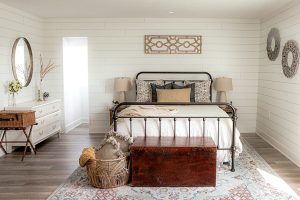Mid-century modern design is a style of architecture, furniture, and decor that originated in the 1940s and 1950s. It is characterized by clean lines, organic shapes, and a focus on functionality.
This style emerged in the aftermath of World War II as a response to the traditional, ornate designs of the past. It was influenced by the work of designers like Charles and Ray Eames, Eero Saarinen, and Florence Knoll, who sought to create simple, elegant pieces that were both functional and aesthetically pleasing.
Many people are drawn to this style for its timeless quality and its ability to blend seamlessly with a variety of decor styles. In this article, we will explore the general concept of the Mid-century modern style.
Origins of Mid-Century Modern Design
The origins of mid-century modern design can be traced back to the 1940s and 1950s. Mid-century modern design was influenced by a number of different movements and styles, including Bauhaus, Art Deco, and Scandinavian design. These styles all emphasized clean lines, functionality, and a focus on natural materials.
In the United States, the mid-century modern movement was driven by a group of designers and architects who were known as the “California Modernists.” These designers, who included Charles and Ray Eames, Eero Saarinen, and George Nelson, were based in California and were influenced by the state’s laid-back, outdoor-focused lifestyle. They sought to create simple, functional pieces that would be at home in the California sunshine.
Mid-century modern movement was a reaction against the traditional, ornate styles of the past. It sought to create a new aesthetic that was clean, functional and focused on the needs of the modern world.
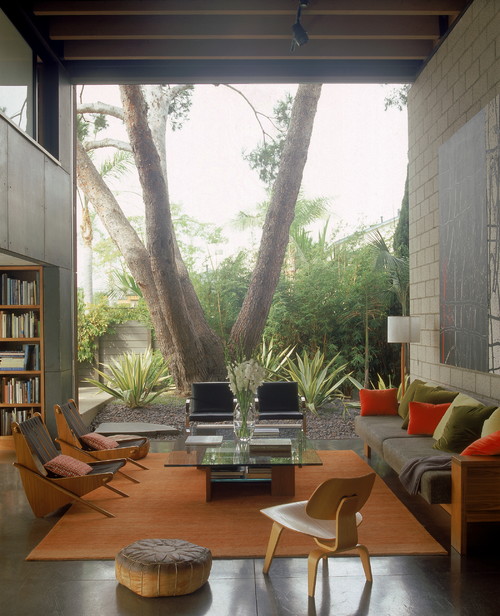
The Characteristics of Mid-Century Modern Style
Mid-century modern design is characterized by a number of key features, including clean lines, natural materials, functionality, and a neutral color palette. These features combine to create a sleek, sophisticated aesthetic that is timeless and versatile.
Some specific characteristics of mid-century modern style include:
Clean, geometric lines: Mid-century modern furniture is known for its simple, geometric lines and shapes. This emphasis on clean lines gives these pieces a sleek and sophisticated look.
Natural materials: Mid-century modern design often incorporates natural materials like wood, leather, and stone. These materials add warmth and texture to the space and help to create a sense of connection to the outdoors.
Functionality: Mid-century modern design prioritizes functionality, with an emphasis on creating pieces that are both aesthetically pleasing and practical. This means that furniture and decor in this style often have multiple uses and can adapt to different situations.
Neutral color palette: Mid-century modern design typically features a neutral color palette, with a focus on earth tones like beige, brown, and grey. This helps to create a calming and relaxing atmosphere in the space.
The characteristics of mid-century modern style combine to create a timeless, elegant aesthetic that is both functional and stylish. This is why it continues to be a popular choice for many people looking to add a touch of sophistication to their homes.
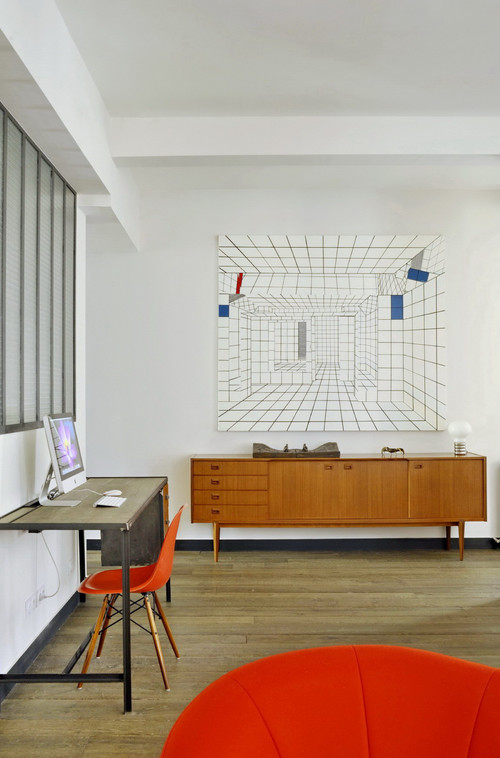
Influential Designers of the Mid-Century Modern Era
The mid-century modern movement was driven by a number of influential designers, who sought to create simple, elegant pieces that were both functional and aesthetically pleasing. Some of the most notable designers of the mid-century modern era include:
Charles and Ray Eames: Charles and Ray Eames were a husband and wife team of designers who are perhaps best known for their innovative use of materials and their focus on functionality. They are credited with creating some of the most iconic pieces of mid-century modern furniture, including the Eames Lounge Chair and the Eames Dining Chair.
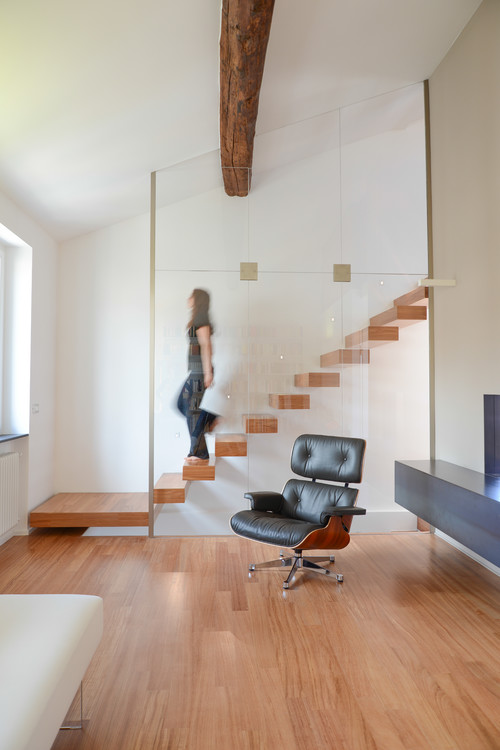
Eero Saarinen: Eero Saarinen was a Finnish-American architect and designer who is known for his groundbreaking work in furniture and architecture. He is best known for his design of the Tulip Chair and the Gateway Arch in St. Louis, Missouri.
Florence Knoll: Florence Knoll was an American designer and architect who is known for her work in furniture design. She was a pioneer in the use of modern materials like steel and glass, and is credited with creating some of the most iconic pieces of mid-century modern furniture.
George Nelson: George Nelson was an American designer and architect who is known for his contributions to the mid-century modern movement. He is best known for his work in furniture design, and is credited with creating some of the most iconic pieces of mid-century modern furniture, including the Marshmallow Sofa and the Ball Clock.
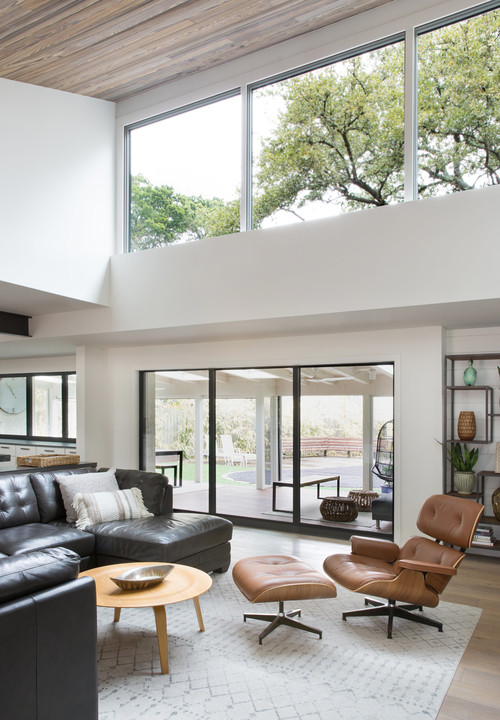
These designers were instrumental in shaping the mid-century modern movement, and their work continues to be influential and inspiring today.
The Continued Popularity of Mid-Century Modern Design
Mid-century modern design originated in the 1940s and 1950s, but its popularity has continued to grow in recent years. Many people are drawn to this style for its timeless quality and its ability to blend seamlessly with a variety of decor styles.
One of the reasons for the continued popularity of mid-century modern design is its versatility. Because it is characterized by clean lines and a neutral color palette, mid-century modern pieces can be easily incorporated into a variety of decor styles. This makes it a popular choice for people who are looking to update their spaces without making a major overhaul.
Another reason for the continued popularity of mid-century modern design is its focus on functionality. Mid-century modern pieces are designed to be both aesthetically pleasing and practical, which is something that many people appreciate in their furniture and decor.
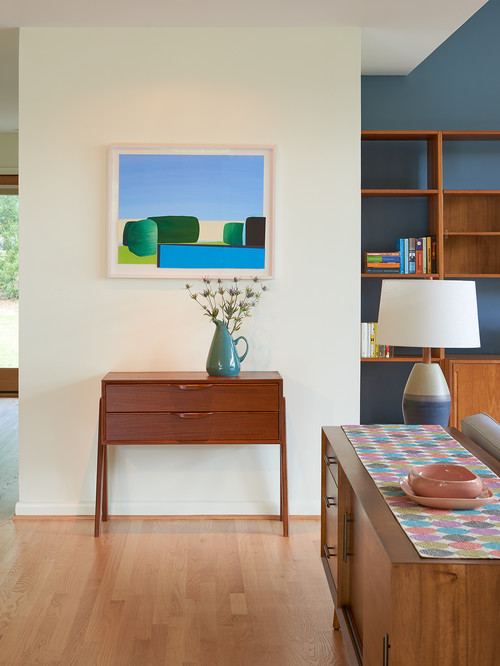
In addition, the popularity of mid-century modern design has been boosted by the rise of online marketplaces like Etsy and eBay, which make it easy for people to buy and sell vintage and mid-century modern pieces. This has made it easier for people to incorporate this style into their homes, and has contributed to its continued popularity.
Overall, the continued popularity of mid-century modern design is due to its versatility, functionality, and timeless elegance.
In Summary
Whether you’re looking to add a touch of mid-century modern to your home, or you’re a dedicated fan of the style, there are many ways to incorporate this timeless aesthetic into your space. From furniture and lighting to accessories and art, there are countless options to choose from to achieve the perfect mid-century modern look. So, if you want to bring a touch of sophistication and elegance to your home, consider exploring the timeless style of mid-century modern design.
Frequently Asked Questions
More Mid-century Modern Style Decor
- Mid-Century Modern Style Bedroom: Iconic Sleep Sanctuary
- Mid-Century Modern Style Living Room: Timeless Elegance
- Mid-Century Modern Kitchen: Stylish Culinary Spaces


